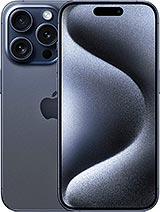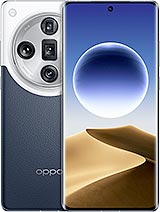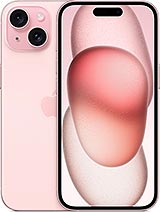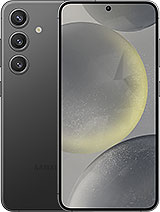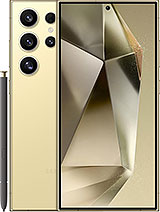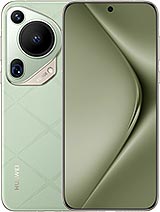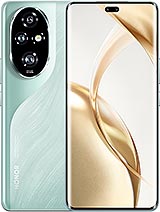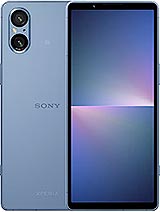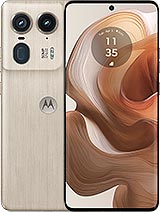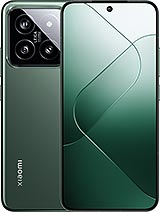Google Pixel 9 Pro review
Larger, super bright display
Like its Pro XL sibling, the Pixel 9 Pro brings some display upgrades over the previous generation. If we compare it to the regular Pixel 8, that is. For one, there is the size increase from 6.2 inches to the new 6.3 inches. This comes along with slimmer display bezels, resulting in a screen-to-body ratio of around 87.6%.
The resolution has been upgraded as well. The Pixel 9 Pro has 1280 x 2856 pixels to work with, which is definitely more than the 1080 x 2400 pixel resolution of the Pixel 8, but not quite as much as the 1344 x 2992 pixels of the Pixel 9 Pro XL. Still, due to the smaller display diagonal, pixel density on the Pixel 9 Pro works out to an incredibly sharp 495 ppi.
Then, there is brightness. Google's new panel now advertises 3000 nits of peak brightness and 2000 nits of whole screen brightness, up from 2000 and 1400 nits, respectively, in the Pixel 8.
We ran our own standardized tests and measured an impressive 1298 nits of maximum brightness by maxing out the slider. The Pixel 9 Pro also has an auto brightness boost mode, which we measured at around 2331 nits.
The minimum brightness at point white was just 2 nits.
Refresh rate
Google calls its best displays Super Actua, and the 'Super' stands for LTPO - the Pixel 9 Pro and Pro XL can dynamically vary their refresh rate in the 1Hz to 120Hz range.
In contrast, the 9 non-Pro has an Actua display (minus the 'Super' part) and can only switch between fixed 120Hz and 60Hz values. Either way, there's just a toggle for 'Smooth display' in settings - no selection of modes or anything - and it comes turned off out of the box.
The Pixel 9 Pro was happy to maintain 120Hz when gaming for both 2D arcade titles and 3D games we tried - when Smooth display was enabled.
Outside of gaming, the Pixel would maintain 120Hz in browsers or social apps when you're scrolling or there's high fps moving content (even when you're not touching the display) but will dial down to 1Hz for static content when there's no interaction.
Streaming and HDR
The Pixel 9 Pro supports HDR10 and HDR10+ but stops short of offering Dolby Vision. We got HDR streams on both YouTube and Netflix, with Netflix also allowing FullHD resolution thanks to the Widevine L1 certification.
You can also count on the Pixel 9 Pro to display Ultra HDR-compliant images with boosted highlights - both its own photos in the Google Photos gallery, as well as other compatible phone images online in browsers or socials.
Google Pixel 9 Pro battery life
The Pixel 9 Pro has a pretty large 4,700 mAh battery, considering its size. It is the same exact pack as the vanilla Pixel 9, and given the other hardware similarities between the two devices, it is not surprising that the two phones have very similar endurance numbers.
The Pixel 9 Pro manages a very solid Active Use Score of 13:11 hours. That means that it has competitor devices like the Samsung Galaxy S24 and the Apple iPhone 15 Pro beat in the battery department (to varying degrees, of course).
Charging speed
The Pixel 9 Pro supports 27W of PD wired charging and up to 15W of wireless charging via the Pixel Stand (12W with a Qi charger).
Battery Share is also on the menu - you can charge other Qi-certified devices off of the Pixel 9 Pro's back. No charger is bundled with the Pixel 9 Pro, so we had to choose our own for testing. We went for a 65W PD 3.1 charger and an official Samsung 45W PD charger.
Since the Pixel 9 Pro has the same charging characteristics as the vanilla Pixel 9, it makes sense that both phones would charge at roughly the same rate. This is exactly the case. Google promises the Pixel 9 should be able to get from 1% to 55% in 30 minutes with the new 45W adapter, and that's what we got with the Samsung charger.
Speakers - loudness and quality
The Pixel 9 Pro XL employs a dual speaker setup with a main unit outputting out of the bottom of the phone and a front-firing one above the display that also serves as an earpiece. The phone will assign the channels dynamically depending on its orientation in space. As Google normally goes about this, each speaker will also output the other channel's track as well, at a lower volume.
In our testing, the Pixel 9 Pro managed a VERY GOOD loudness score and even ended up being louder than the Pixel 9 Pro XL.
Tuning-wise, the Pixel 9 Pro is expectedly similar to the Pixel 9 Pro XL and slightly different from the previous generation of Pixel phones. The low end has been toned down a bit, and so have the vocals. Mids are still very clear and crisp, and there is no distortion, even at high volume levels.
Use the Playback controls to listen to the phone sample recordings (best use headphones). We measure the average loudness of the speakers in LUFS. A lower absolute value means a louder sound. A look at the frequency response chart will tell you how far off the ideal "0db" flat line is the reproduction of the bass, treble, and mid frequencies. You can add more phones to compare how they differ. The scores and ratings are not comparable with our older loudspeaker test. Learn more about how we test here.
Connectivity
The Pixel 9 Pro is a single-SIM device. It only takes one physical nano-SIM card. It does, however, also support eSIM, which is great. It is a 5G device with SA/NSA Sub6 connectivity. A version with mmWave exists for certain carriers as well.
The Pixel 9 Pro has dual-band GPS (L1+L5) and GLONASS, GALILEO, BDS, QZSS and NavIC for positioning. The phone also has SOS satellite connectivity. Local connectivity includes tri-band Wi-Fi 7, including the newer 6GHz band. Bluetooth is version 5.3 with LE and aptX HD support. In case you were wondering, you also get NFC on board, though no FM radio receiver or an IR blaster. There is no 3.5mm audio jack either.
As per official specs, the USB port on the Pixel 9 Pro supports USB 3.2, which is technically true but could be a bit confusing to some since the USB 3.2 spec is very broad and the Pixel only supports USB 3.2 Gen 1, which means theoretical top speeds of up to 5 Gbps. It's not too shabby for a mobile phone. The USB port also has Host/OTG support, as expected. There is also DP over USB alt mode for wired video output, which is nice.
The Pixel 9 Pro has a full set of sensors on board. There is an Invensense ICM45631 accelerometer and gyroscope combo, a MEMSIC MMC5616 magnetometer and compass, an AMS TMD3733 light and hardware proximity sensor combo and an Invensense ICP20100 barometer.
Reader comments
- Tourteecala
- 27 Mar 2025
- jg0
He never said anything about being "mad". Just relaying his positive experience about the phone and I'm sure everyone else will have differing experiences. Funny how you called him a "representative", are you a schill competi...

